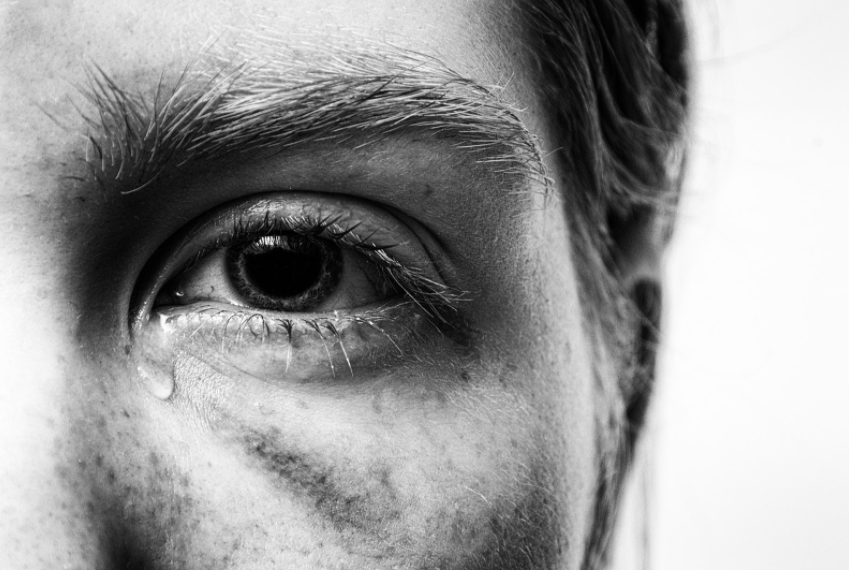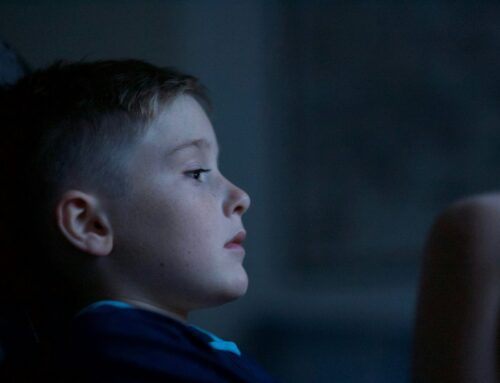There has been increased awareness lately about childhood trauma. Parents and mental health professionals alike have worried about the impact that the COVD-19 pandemic has had on children, as well as adults. The pandemic brought and continues to bring numerous changes, including distancing from familiar friends, extended family, and schools. Students also saw terrifying news footage and felt a great deal of uncertainty. Some families have sadly lost loved ones.
Luckily, there are steps that parents can take to help children manage their reactions and cope with traumatic experiences. Many life situations can lead to post-traumatic stress disorder (PTSD) or other trauma disorders for children and adults. According to the U.S Department of Veteran Affairs, it is estimated that 7-8% of the population will develop PTSD after a traumatic experience. (1) Meanwhile, over half of men and women alike go through at least one trauma during their lifetimes.(1)
Examples of Psychologically Traumatic Events
There are many life events that can trigger PTSD or another trauma disorder. These may include:
- Serious medical procedures, especially when given at a young age (2)
- Car accidents (2)
- Being bitten by an animal (2)
- Witnessing or experiencing violence (3)
- Global or local events that directly affect the person, such as a school shooting or terrorist attack (2, 3)
- Natural disasters, such as a tornado or an earthquake (3)
- Sexual molestation (2)
- Bullying or emotional abuse (2)
- Child neglect (2)
- Unexpected or violent loss of a loved one (3)
- Experiencing racism (3)
- Military-related PTSD (3)
This is not a complete list. Every person responds to life circumstances differently. An experience is more likely to develop into a trauma disorder when it is experienced more than once, is severe, and is experienced at a young age.(2) For children, being able to access coping skills and emotional support can protect them from the effects of the trauma. This is known as a protective factor. (2)
Identifying Trauma
Some children and adults will develop a trauma disorder throughout their lives, while others will not. Just as it is true that every person reacts to situations differently, it is also true that every person with trauma has different signs and symptoms. However, the most common signs of a mental health problem related to trauma, such as PTSD, include:
- Extreme distress when in a situation that is a reminder of the traumatic event (2)
- Flashbacks or nightmares (2)
- Difficulty sleeping (2)
- Hypervigilance (2)
- Depression (2)
- Mood changes or even violent behavior (2)
- Experiencing regressive behaviors, such as bedwetting (2)
- Headaches or other unexplained physical symptoms (2)
- Anxiety or panic attacks (2,3)
- Substance abuse, eating disorders, or self-harm (2,3)
- Problems in work or school (2)
Therapies to Address Trauma
When trauma is ignored, it can lead to problems in every aspect of a person’s life. Seeking therapy for trauma can help those who have experienced it learn coping skills, self-regulation, and symptom management.(3) There are a variety of types of therapy available to process and manage trauma.
Eye Movement Desensitization and Reprocessing (EMDR)
EMDR can be an incredibly helpful treatment for trauma. (3) This is a unique therapy that uses bilateral stimulation, such as following a light back and forth with your eyes, to reprocess traumatic memories. EMDR can be emotionally difficult for those who are undergoing it, but there is solid evidence for its effectiveness.
Cognitive-Behavioral Therapies
CBT, or cognitive-behavioral therapy, is a common treatment for many different mental health conditions, such as obsessive-compulsive disorder. When used to help those who have experienced trauma, CBT can take the form of cognitive processing therapy, trauma-focused cognitive behavioral therapy, or prolonged exposure. (3,7)
It is recommended that cognitive processing therapy take place over 12 sessions.(4) This therapy helps individuals to change how they think about their trauma. Trauma-focused CBT also takes place over 12 or more sessions.(3) Like cognitive processing therapy, this type of therapy also helps the person to change the thought processes surrounding their experience. However, this therapy can also assist other people affected by the trauma, such as a parent who was not part of the abuse in a child abuse case. (5)
Prolonged exposure is another branch of CBT. Over a period of 3 months, individuals focus on their traumatic memories and triggers.(7) They describe the traumatic event to their therapist and process the resulting emotions. (7) They also confront the sights, sounds, and experiences in their day to day life that are associated with the trauma. Through this therapy, a person can learn not to fear their traumatic memories.
Narrative Exposure Therapy
Narrative exposure therapy is most frequently used with individuals who have experienced trauma as a result of global, cultural, or societal factors.(6) For example, narrative exposure therapy is a common trauma treatment for refugees. During narrative exposure therapy, a person’s life story is written down with the traumatic events incorporated into the story. This therapy helps a person better understand how traumatic events shaped their life, lessening the impact of the trauma.(6)
Family Therapy
Family therapy can help the entire family process a traumatic experience affecting everyone or just one person within the family. Family therapy can also help parents learn ways to support a child who is recovering from trauma.
Additional Therapies for Trauma Disorders
Other therapies can be used to help children and adults process trauma. For children under age 12, play therapy is often used to help children learn coping skills and ways to manage their trauma. (3) Both children and adults can also benefit from art or music therapy to provide a creative outlet for processing trauma with a therapist. (3)
Services at NeuroBehavioral Associates
The clinical team at NeuroBehavioral Associates includes staff with specializations in forensic neuropsychology. We can assist with cases and medical evaluations involving trauma and PTSD. NeuroBehavioral Associates also administers comprehensive neuropsychological assessments for children, adolescents, and adults with known or suspected cognitive, learning, and neurodevelopmental differences.
Contact NeuroBehavioral Associates today for more information on the services that we provide or to schedule an appointment.
References:
- U.S Department of Veterans Affairs. (n.d.). VA.gov | Veterans Affairs. Retrieved July 31, 2021, from https://www.ptsd.va.gov/understand/common/common_adults.asp
- Children’s Hospital of Philadelphia. (n.d.). Post-Traumatic Stress Disorder in Children. Retrieved July 31, 2021, from https://www.chop.edu/conditions-diseases/post-traumatic-stress-disorder-children
- Lindberg, S. (2021, March 4). How Therapy for Childhood Trauma Can Help. Healthline. https://www.healthline.com/health/mental-health/therapy-for-childhood-trauma#effects
- American Psychological Association. (n.d.). Cognitive Processing Therapy (CPT). Retrieved July 30, 2021, from https://www.apa.org/ptsd-guideline/treatments/cognitive-processing-therapy
- Child Welfare Information Gateway. (2018). Factsheets. https://www.childwelfare.gov/pubs/trauma/
- American Psychological Association. (n.d.). Narrative Exposure Therapy. Retrieved July 30, 2021, from https://www.apa.org/ptsd-guideline/treatments/narrative-exposure-therapy
- American Psychological Association. (n.d.). Narrative Exposure Therapy. Retrieved July 30, 2021, from https://www.apa.org/ptsd-guideline/treatments/narrative-exposure-therapy






